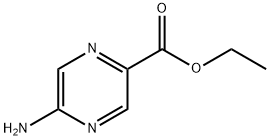Recently, in the liquid chlorine workshop of a chemical enterprise in Hangzhou, under remote control, the robotic dog, with the cameras it's equipped with, can check whether the equipment such as pipelines, valves and instruments are operating normally. It has achieved automatic inspection and monitors the chlorine gas leakage around the clock.
This inspection robotic dog can withstand high temperatures ranging from 50 degrees Celsius to 60 degrees Celsius. When faced with dangerous chemical substances like hydrogen and chlorine gas that may be generated during production, it's completely immune to them. It can conduct detections of environmental temperature and humidity, gas leakage and liquid leakage, and determine whether the nearly 5,000 non-metallic Teflon pipes on the electrolytic cell are cut off. The judgment accuracy rate of its core electrolytic cell cut-off detection algorithm reaches 99.99%. Compared with traditional manual inspections, the risk is greatly reduced.In addition to the high - accuracy electrolytic cell cut - off detection, what other specific advantages do these 99.99% accurate AI robotic dogs have in terms of cost - effectiveness in chemical industry inspections? For example, how much labor cost can be saved compared to traditional manual inspections in a year? Also, considering the long - term use in harsh chemical environments, what is the durability and maintenance frequency of these robotic dogs? Will their performance degrade over time?
What changes will the 99.99% accurate AI robotic dogs bring to the chemical industry inspection?
Related Products More >
-
- CNY equest For Quotation
-
- CNY equest For Quotation
-
- 107-43-7
- CNY equest For Quotation
-
- 107-43-7
- CNY equest For Quotation
-
- 123-99-9
- CNY equest For Quotation
-
- 123-99-9
- CNY equest For Quotation
-
- 3650-09-7
- CNY equest For Quotation
-
- 3650-09-7
- CNY equest For Quotation



 沪ICP备2021018848号-5
沪ICP备2021018848号-5

First off, let's think about the labor cost. Traditional manual inspections need a lot of workers, and they have to be trained properly. These workers need to be paid salaries, bonuses, and other benefits. With the AI robotic dogs, you don't need as many human inspectors. Let's say in a year, for a big chemical plant, hiring and maintaining a team of manual inspectors might cost hundreds of thousands of dollars. But with the robotic dogs, you only need to pay for the initial purchase cost and some software maintenance. Maybe you can save half or even more of the labor cost in a year. That's a huge saving!
Then there's the aspect of time. Manual inspections are time-consuming. Workers have to go through each area of the plant slowly, checking every single piece of equipment. The robotic dogs, on the other hand, can move much faster and cover a larger area in a shorter time. They can work continuously without breaks, which means the inspection process can be completed much quicker. This not only saves time but also allows for more frequent inspections, which can catch problems earlier and prevent bigger disasters.
Now, about the durability and maintenance frequency in harsh chemical environments. These robotic dogs are designed to be tough. They're made of materials that can withstand the corrosion of those dangerous chemicals. But of course, they're not indestructible. Over time, parts like the cameras, sensors, and motors might wear out. However, compared to humans working in those harsh conditions, the robotic dogs can last much longer. Their maintenance frequency depends on how often they're used and how severe the environment is. Maybe they need to be checked and serviced every few months. And if a part does need to be replaced, it's usually a matter of swapping out a component, which is much easier and cheaper than dealing with human health issues caused by exposure to chemicals.
As for whether their performance will degrade over time, it's possible. But the good thing is that the technicians are constantly working on improving the AI algorithms. They can update the software to make the robotic dogs more accurate and efficient. And as long as the hardware is maintained properly, the performance should remain stable for a long time. So overall, these AI robotic dogs have a lot of potential in terms of cost-effectiveness and performance in chemical industry inspections.